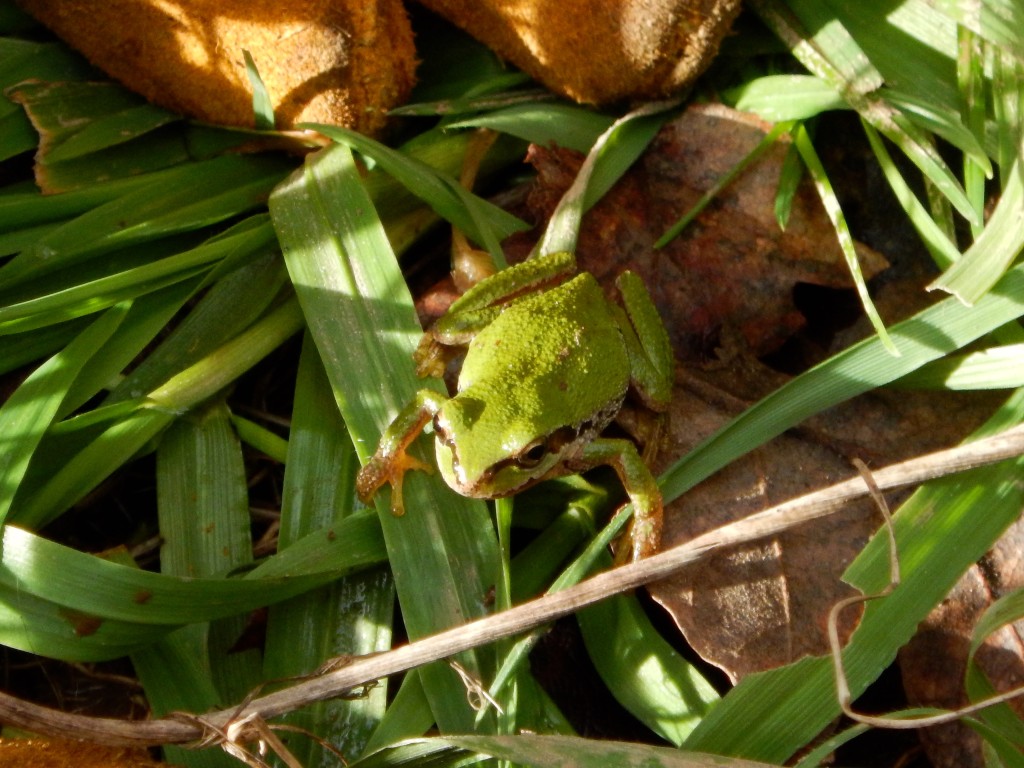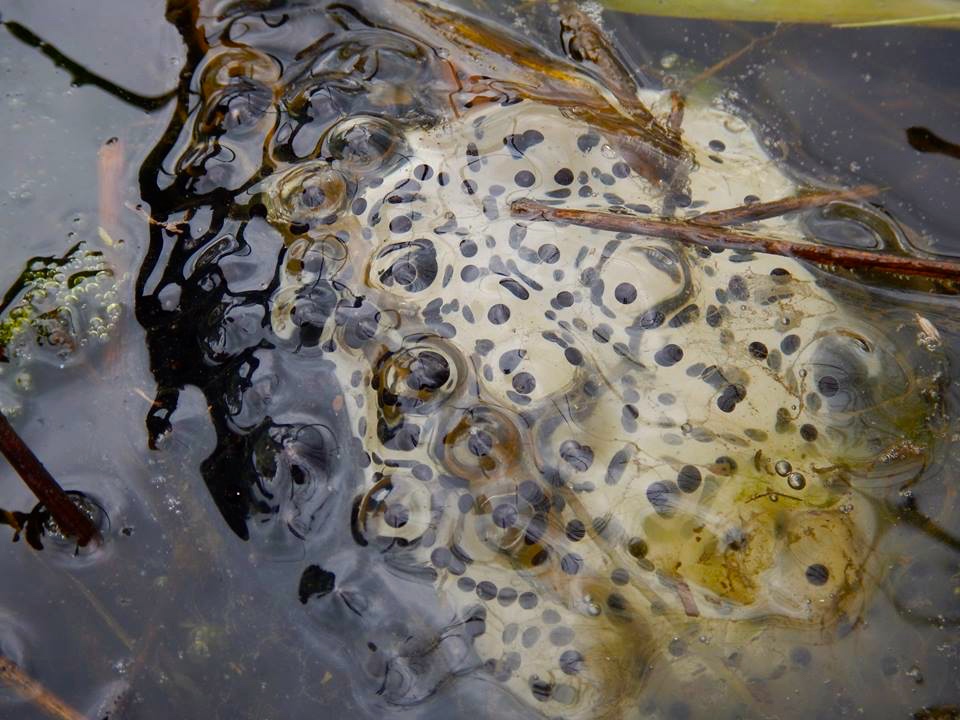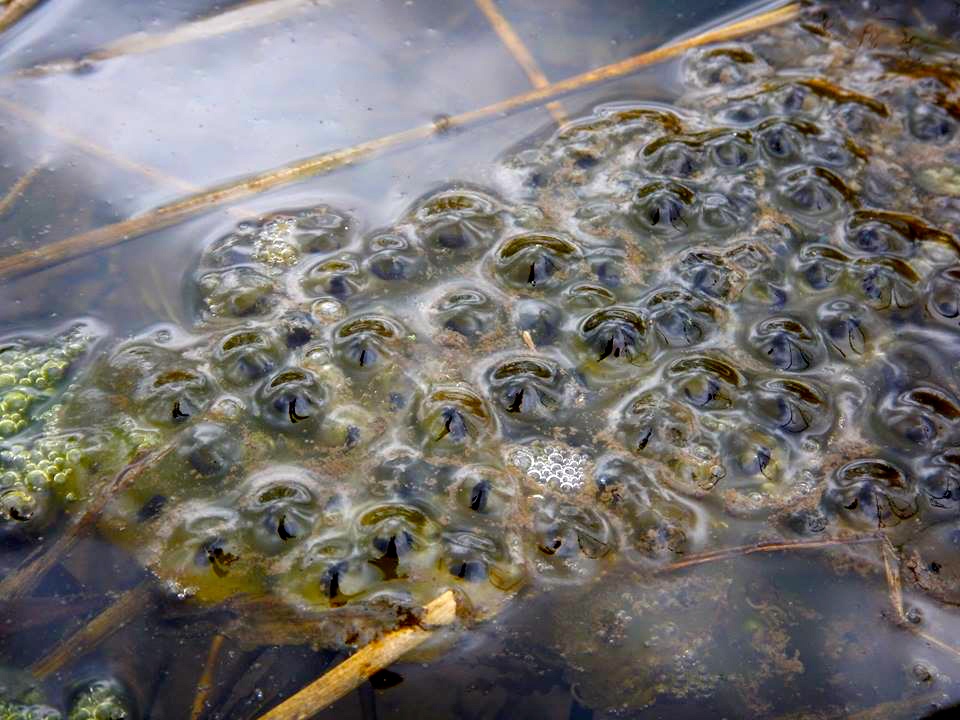January 20th was the first day I heard frogs this season. I know, because it was exciting enough that I wrote it in my journal: one of the first harbingers of spring.
It was a magical day anyway, a then-rare day without rain, though everything was still wet. As I pulled my bike out of the garage, the world smelled fresh and clean. But more than that was the sense of peace: pure, pre-sunrise morning quiet, where the mechanical world of a city seems to melt away and leaves only the fresh morning smell and the beginning birdsong. Without the rain and clouds, it was almost even light as I rode, and then there was that first, glorious frog.
 (a lovely Pacific Chorus Frog, with two gloved fingers at the top of the frame for inadvertent size reference:)Â
(a lovely Pacific Chorus Frog, with two gloved fingers at the top of the frame for inadvertent size reference:)Â
In the Willamette Valley, we have two species of native frog. The ones you hear at dawn and especially dusk (and sometimes in between) are the Pacific Chorus Frogs, Pseudacris regilla. The ones you don’t hear are the Northern Red-Legged Frogs, Rana aurora — and you don’t hear them because they mostly croak underwater.
The croaking is generally a broadcast call, or so we humans say — male frogs looking for a sexy lady frog, broadcasting their mating availability, vim and vigor. When it’s time to find an amphibian paramour, all those hopeful males migrate down to water, call their little hearts out, and thereby try to entice a lady down to the same part of the pond. When she does come down to choose herself a robustly croaking mate, the male chorus frog grabs on to her, something called amplexus: he climbs onto her back and uses the sticky pads of his toes to grab her under her arms, basically helping himself to a long-lived piggyback ride. Having latched on, the male keeps hugging his lady love until she lays her eggs, whereupon he immediately fertilizes them (I bet you didn’t ever think this blog would be a lesson in frog reproduction, did you??).
As I ride, I hear the pre-amplexus frogsong, the males looking for love.
Frogs have also permeated my working world. I hear them as I ride, then at work I head out into the wetlands with my crew to look for and record the egg masses that both species of frog leave behind after they mate. Basically, that means we put on chest waders, wander so, so carefully through the water, and look for eggs attached to aquatic plants in gelatinous clumps –Â large masses in the case of red-legged frogs and very small for the chorus frogs.
 (Northern Red-Legged Frog egg mass: the black circles are the freshly-laid eggs)
(Northern Red-Legged Frog egg mass: the black circles are the freshly-laid eggs)
 (later, the eggs elongate, turn into tadpoles, and hatch out of their gelatinous mass)
(later, the eggs elongate, turn into tadpoles, and hatch out of their gelatinous mass)
In the scheme of things, frogs mate relatively early. I mean, it was way back in January, which still feels like the throes of winter, when I heard the first croaks. But now they’re in full swing, making me smile as I bike the gauntlet of frog chorus that is the evening Springwater these days. And I imagine all their egg masses swaying in the water out there along the trail, some now hatching out into tadpoles, some of which will become frogs and an even smaller lucky number of which I may hear next year looking for mates as I bike home from work.
Riding through the world when I can smell and hear and feel what’s around me reminds me of these cycles, of the fact that no matter my own or others’ perception of it, nature is always out there working her magic. I ride to work and do my “real-life” things, and all around me new real life is exploding, the frogs are croaking, the world is singing her love song. And sometimes, when I’m lucky, I get a glimpse of it too, I feel a part of it, my own little segment of magic surrounded by the chorus of frogs.

Très intéressant! … et si bien écrit!!
Et c’est tout vrait aussi! heh. (Can I even say that?:) Merci!